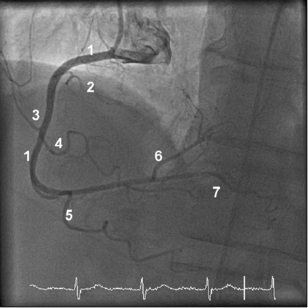Topic 1 Coronary circulation
Coronary blood flow
Oxygen consumption of myocardium at rest = 8–10 ml/min/100 g.
The heart receives ~5% of total cardiac output.
During exercise myocardial oxygen consumption can increase to > 40 ml/min/100 g.
Increased demand is met by increasing coronary blood flow.




